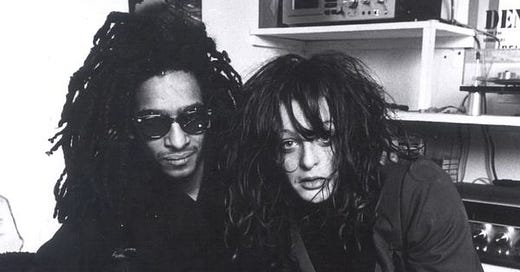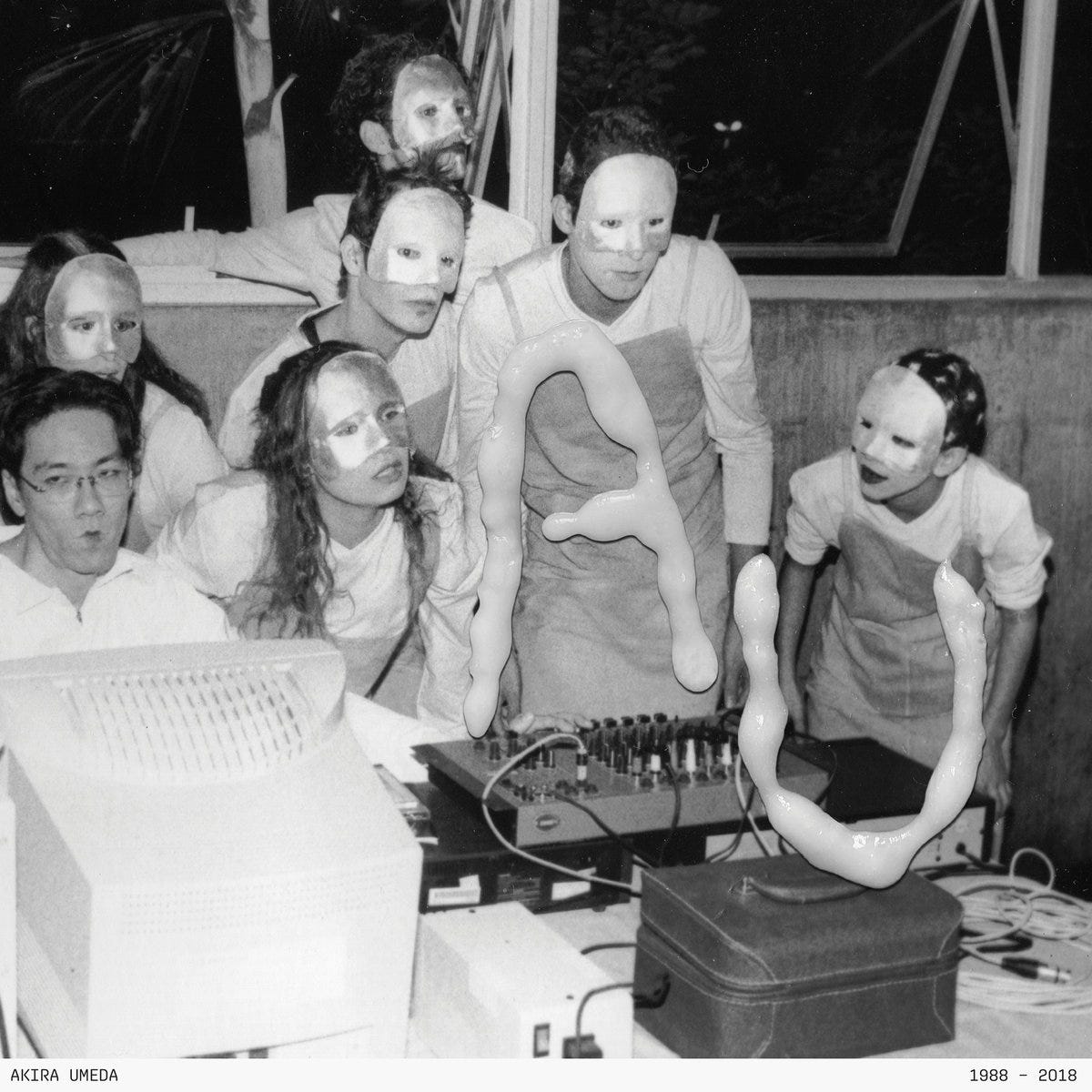The mind-blowing Don Letts reggae and punk archive; and new hotness from Black Duck, Hiroshi Tanaka and Yoichi Fuwa, and Akira Umeda
Discussed: London in the late '70s, reggae, the Slits, Big Youth, Douglas McCombs, Chicago music, self-described "Heirs to the Beatles," tape collage, Bill MacKay, punky reggae
Few have experienced more than Don Letts when it comes to 1970s and ’80s British reggae, the punk and post-punk explosion and the vital connection between them in Kingston and London. A filmmaker, photographer, vocalist for Basement 5, longtime confidante to the Slits, Public Image Limited, and the Clash, and cofounder of Big Audio Dynamite, Letts not only caught history in the making with his camera, but helped make said history through his vision, connections and passion for sound.
He also had an amazing eye, a searing love of reggae, punk, and punky reggae, and played a role in bridging the divide between white British colonialists and their former Jamaican subjects.
For example, anyone who listens to reggae has come across references to Trenchtown, the Kingston enclave whose residents created the sound of Jamaica. Few are the opportunities to travel back to late ’70s Trenchtown and absorb the actual place, though. Letts had the foresight to document this otherwise invisible shantytown. He was also a connector whose DJ sets at punk club the Roxy did as much as anything to influence the dub-drenched sound of post-punk.
Two years ago, the commercial film house the Kino Library began uploading footage from Letts’ 16 mm camera. An independent film agency based in East London, Kino’s business is “supplying high quality, rare and inspiring archive footage to documentary makers, ad agencies and museums.” Letts’ footage covers all these bases, albeit in brief (the shortest is six seconds, the longest about three minutes) filmed snippets. The collection is a revelation, a portal to a location whose history, culture and creative spirit merged, like pure carbon transforming into a (mighty) diamond, to become a brilliant, effervescent movement.
“In the late 70s, the only white people you would see down at a Jah Shaka dance in Dalston, Hackney or Stoke Newington, would be Johnny Rotten, those guys from Public Image, Joe Strummer, and other guys from The Pistols or The Clash,” Letts told one interviewer. “These were my friends, people I’d taken with me. Now it’s great to see so many different kinds of people, different nationalities in the dance.”
That influence went both ways, Letts added. “Bob [Marley] wasn’t into punk style and fashion at first, like the designs Malcolm and Vivienne [at punk fashion shop SEX] were putting out, but I just told him, ‘Yeah Bob, this is what people are doing now, you know?'”
Letts added in another interview, “I fell out with Bob Marley over punk. I had on some bondage trousers and he said to me, ‘Don Letts, whatcha dealin’ wit? You look like one of dem nasty punk rockers.’ I said, ‘Hold on a minute, these are my mates!’ He’d obviously been reading the tabloids, which portrayed punks negatively. I didn’t tell him to fuck off, but as a baby dread I held my ground,” Letts said. “Later he was moved to write that song, ‘Punky Reggae Party’, which put reggae on the map. So I figure I got the last laugh.”
Ari Up of the Slits exudes the kind of careless cool that Lydon lacks in Letts’ footage. Letts and Ari were close friends, and Ari lights up every frame she and the other members of the Slits are in. Granted, as the daughter of a German publishing magnate, she had much fewer day-to-day worries than those with whom she surrounded herself — Lydon eventually married Ari’s mother, becoming her stepfather (and a kept man) in the process — but the magnetic singer’s joyful dancing and performing in the footage is absolutely infectious.
Above, she’s dancing with Prince Mohamed to Linton Kwesi Johnson’s massive “Victorious Dub.”
As John Darnielle (h/t) of the Mountain Goats — who highlighted the Letts archive a few weeks ago on social media — noted, you can easily lose an entire day absorbing this footage.
Here’s the entire Don Letts playlist on YouTube.
(Originally published at In Sheep’s Clothing.)
Pick Hit: Black Duck – Black Duck
A spine-tinglingly great new instrumental album from an accomplished Chicago trio featuring bassist/guitarist Douglas McCombs, guitarist Bill MacKay, and drummer Charles Rumback, Black Duck moves from ethereal ambient guitar pieces to distorted rock jams to evocative explorations that wouldn’t feel out of place if they popped up in an Ennio Morricone score.
You can hear echoes of McCombs other band, Tortoise (he’s a cofounder) on “Delivery,” and MacKay’s brilliant solos across the album will hopefully inspire listeners to explore his essential records for Drag City. Make sure to focus on Rumback’s drumming; he’ll take you on a ride. [Originally posted for In Sheep’s Clothing Hi-Fi.]
Impossible Instrument
Pick Hit: Hiroshi Tanaka and Yoichi Fuwa – Untitled White Album
A sublimely schizophrenic 1974 folk rock album from the self-proclaimed “heirs to the Beatles,” Hiroshi Tanaka and Yoichi Fuwa’s home-recorded private-press album “Untitled White Album” was originally issued in a run of 100 copies. It’s since become a talisman of Japanese psych-rock, a one-and-done gem recorded in Fuwa’s apartment that grows with each listen. This reissue draws from what label First & Last Records describes as “50 nameless songs.”
Release notes from the label, which is focused on private press Japanese acid folk, psych and rock albums from the 1970’s, continue: “Since they could not fit all of the songs on an album they choose 19 of their favorites and self-released their Untitled White Album. The album has since grown a fitting mystic, often referred to simply as an Untitled Album by Unknown Artist.” This double LP reissue features Untitled White Album and 16 previously unreleased songs dubbed Untitled White Album II. Highly recommended. [Originally posted for In Sheep’s Clothing Hi-Fi.]
Pick Hit: Akira Umeda – (1988-2018)
The multidisciplinary obsessive Akira Umeda, per his biography, was trained as a historian but later became “a ceramicist, a photographer, a visual artist, a draftsman, a graphic designer, a DJ, a musician, an audio technician, a writer, a researcher… He made forays into a myriad of artistic and academic fields – with a single intention: to achieve a specific objective and promptly exit stage left, as it were.” This singular document explores his music – specifically 42 recordings created between 1988 and 2018 that have been stored in Umeda’s São Paulo home – through four extended collages.
The range is astounding: field recordings, ambient electronic pieces, menacing primitive electronic pieces that sound like Reznor-Ross film scores, songs, synthetic jams, prank calls all woven together into fascinating wholes. Released digitally and as a double-LP set, the collection is one of the most beguiling archival releases this year. [Originally posted for In Sheep’s Clothing Hi-Fi.]










